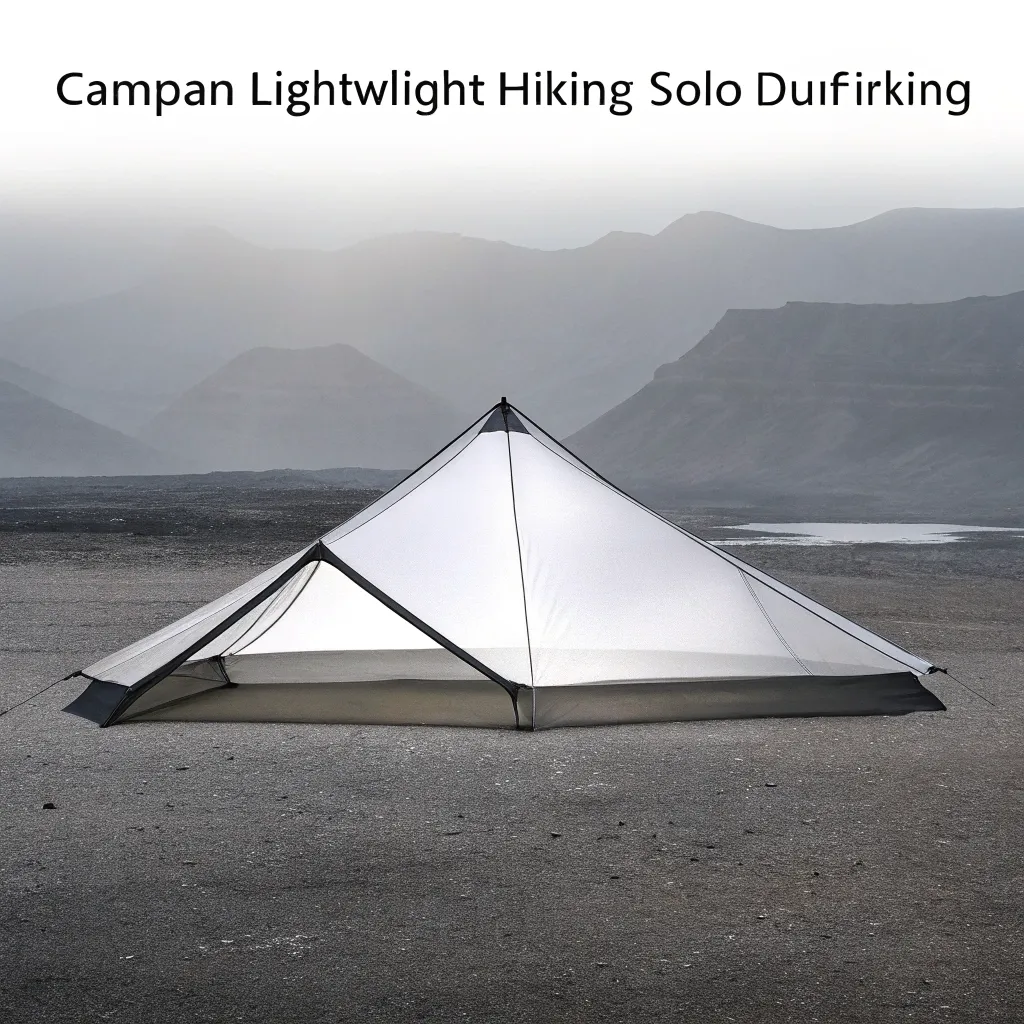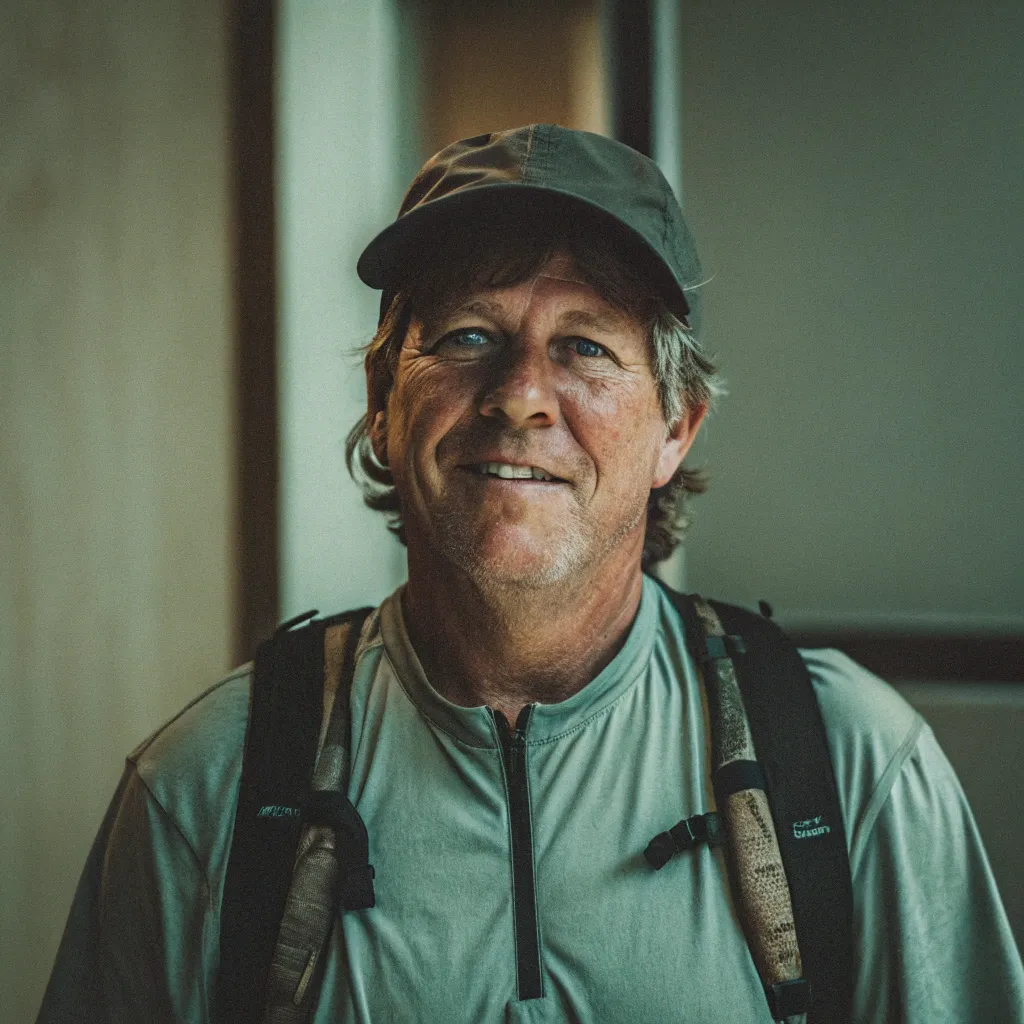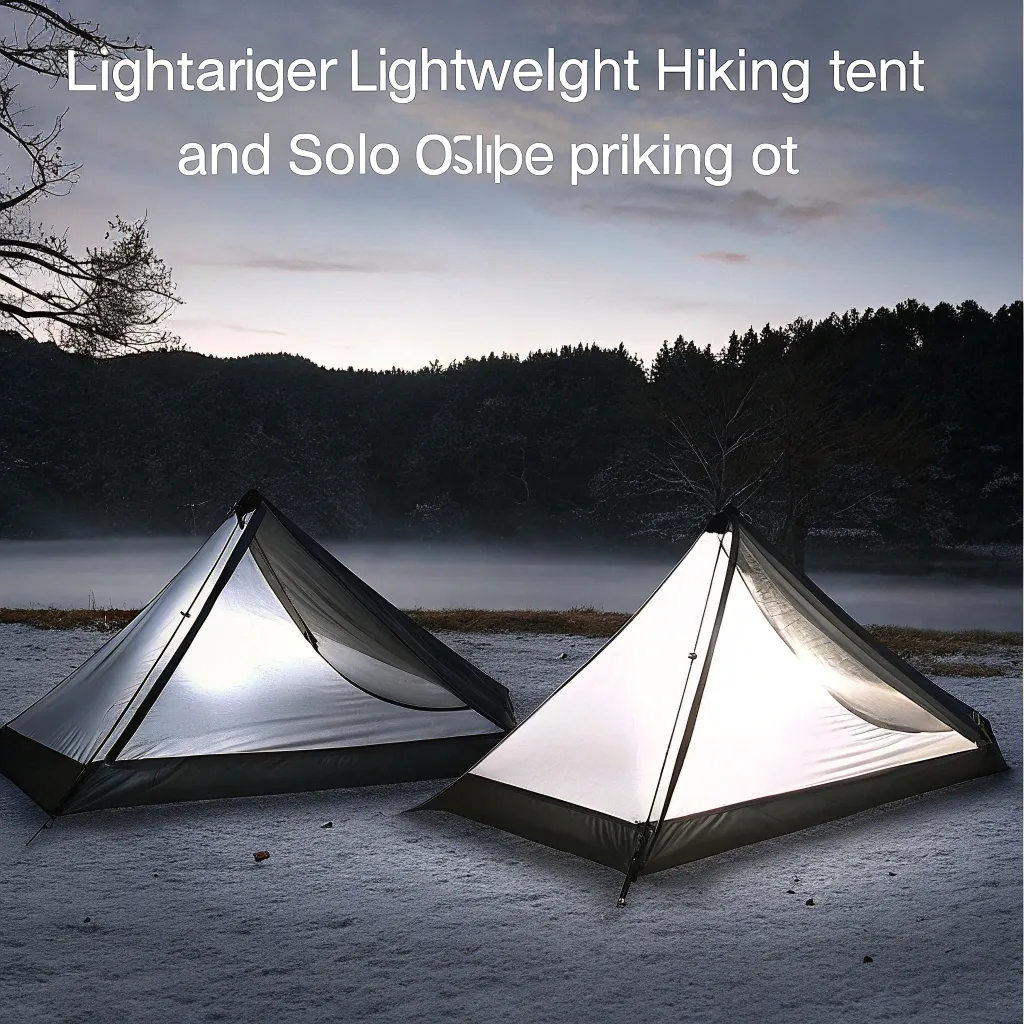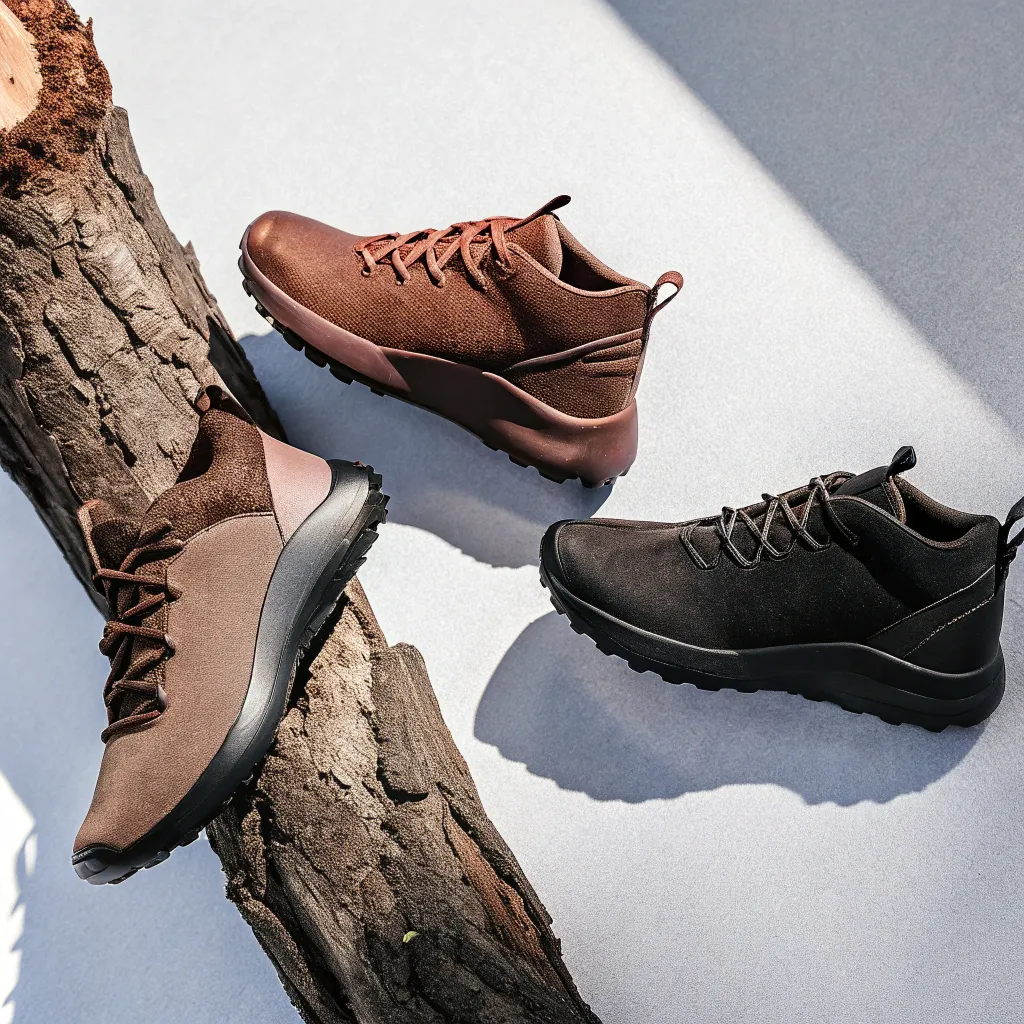Finding the perfect lightweight tent for your backpacking adventures can make or break your wilderness experience. I've spent countless nights under various shelters and learned—sometimes the hard way—that the right tent balances weight savings with comfort and protection. Last summer, my ultralight obsession led me down a rabbit hole of researching the latest offerings for solo and duo hikers.
Understanding Ultralight Tent Materials and Design
The ultralight tent market has evolved dramatically in recent years, with manufacturers pushing boundaries using innovative materials and design concepts. Two materials dominate the premium lightweight tent market: silicone-coated polyester (silpoly) and Dyneema Composite Fabric (DCF).
DCF vs. Silpoly: The Material Showdown
DCF (formerly known as Cuben Fiber) represents the gold standard for ultralight enthusiasts willing to pay a premium. This non-woven composite material offers several advantages:

- Incredibly lightweight (often 30-40% lighter than silnylon alternatives)
- Doesn't stretch or sag when wet
- Highly waterproof without requiring seam sealing
- Exceptional tear strength
The downside? DCF tents typically cost 2-3 times more than their silpoly counterparts. For example, Zpacks DCF shelters often start around $600 and can exceed $700 for larger models.
Silicone-coated polyester (silpoly) offers a more budget-friendly alternative that still delivers solid performance:
- Better UV resistance than nylon
- Minimal stretch when wet compared to silnylon
- Typically more affordable
- Generally more durable against abrasion than DCF
Six Moon Designs primarily uses silpoly in their popular Lunar Solo tent, which sells for around $260—less than half the price of many DCF options.
Trekking Pole Tents: Weight Savings Through Dual-Purpose Gear

Most ultralight tents these days utilize trekking poles for support rather than dedicated tent poles. This design philosophy follows a core ultralight principle: make gear serve multiple purposes. If you're already carrying trekking poles for hiking, why not use them to support your shelter?
As one Reddit user in the r/Ultralight community noted about the Lunar Solo: "There is a feature (flaw) in the design that makes it different from most other trekking pole tents. The pole is offset from the peak of the tent." This design quirk creates unique pitching challenges but also provides distinctive advantages in space utilization.
Top Solo Trekking Pole Tents Reviewed
Six Moon Designs Lunar Solo
Weight: 26 oz (740g) Material: 100% Silicone-coated Polyester Interior Space: 26 sq ft Price: $260
The Lunar Solo earned Backpacker Magazine's Editors' Choice award in 2019, and for good reason. This hexagonal shelter offers remarkable space-to-weight ratio for solo hikers.
During my three-night trip through Olympic National Park last May, the Lunar Solo performed admirably in light rain conditions. The offset pole design creates an asymmetrical living space that feels more spacious than the numbers suggest. However, I did notice the tent requires a careful pitch to prevent sagging—a common observation among users.
One Reddit user commented: "The Lunar Solo and other similar design SMD tents (Deschutes/Gatewood) are not the same as 'any trekking pole tent'. There is a feature (flaw) in the design that makes it different."
This "feature" refers to how the peak of the tent doesn't align directly with the trekking pole placement, creating a learning curve for proper setup. I found that after 3-4 pitches, I developed a reliable system, but first-time users should practice before heading into the backcountry.
The Lunar Solo shines in ventilation with its large mesh door and substantial peak vent, virtually eliminating condensation issues that plague many single-wall tents.
Zpacks Solo Options
Weight: 13.9-17.1 oz (394-485g) depending on model Material: DCF (Dyneema Composite Fabric) Interior Space: Varies by model Price: $599-699
Zpacks has built its reputation on ultralight DCF shelters that appeal to thru-hikers and weight-conscious backpackers. Their solo offerings, including the Altaplex and Plexamid, represent some of the lightest fully-enclosed shelters on the market.
The primary advantage of Zpacks shelters is their phenomenal weight-to-space ratio. The Altaplex, designed for taller hikers, weighs just 15.4 ounces but provides 23 square feet of floor space and a generous 58-inch peak height.
DCF's non-stretch properties mean these tents maintain their shape in wet conditions, unlike silnylon shelters that sag when damp. This characteristic makes Zpacks tents particularly valuable in rainy environments where constant retensioning would otherwise be necessary.
The downside? Cost and durability concerns. DCF doesn't handle abrasion as well as woven fabrics, requiring more careful site selection and handling. And at $600+, these represent a significant investment.
Duo Tents for Couples or Comfort-Seeking Solo Hikers
Zpacks Offset Duo
Weight: 19.2 oz (545g) Material: DCF (Dyneema Composite Fabric) Interior Space: 42 sq ft Price: $699
The Zpacks Offset Duo represents an innovative approach to two-person shelters. As noted in Adventure Alan's review, it's "an ultralight non-freestanding, completely bug-proof, single-walled, well-ventilated, trekking pole-supported shelter made with Dyneema Composite Fabric."
What makes the Offset Duo unique is its asymmetrical design with offset trekking poles. This arrangement creates more usable interior space than traditional designs while maintaining excellent stability in wind.
The tent features two doors and vestibules, allowing each occupant independent entry/exit and gear storage. At just 19.2 ounces, it's lighter than many solo tents while providing legitimate space for two.
According to Adventure Alan, "The Offset Duo is spacious enough for two people to sit up simultaneously without touching the ceiling or each other."
Zpacks Free Duo
Weight: 35 oz (992g) Material: DCF (Dyneema Composite Fabric) Interior Space: 42 sq ft Price: $799
For those seeking a freestanding option, the Zpacks Free Duo offers a compelling alternative. Unlike most ultralight shelters, this tent uses a dedicated pole structure rather than trekking poles.
A review from Garage Grown Gear noted: "When I used the tent alone, there was ample room for me and my gear." This highlights a key consideration—many backpackers choose duo tents for solo use to gain extra living space and comfort.
The freestanding design makes the Free Duo significantly easier to set up on challenging surfaces like solid rock, sand, or platforms at established campsites. The tradeoff is additional weight from the pole structure—35 ounces compared to the Offset Duo's 19.2 ounces.
How Tall Hikers Can Find Comfortable Ultralight Shelters
Finding suitable ultralight shelters presents particular challenges for taller backpackers. Standard tent dimensions often leave 6'+ hikers with feet pressing against tent walls or heads brushing against mesh.
Length Considerations for Tall Hikers
Most standard tents offer floor lengths between 84-88 inches, which proves insufficient for many tall hikers once you account for sleeping pad placement and the sloped walls typical in ultralight designs.
One Reddit user searching for DCF options noted: "The Zpacks Duplex XL has been discontinued," highlighting a common frustration among tall hikers—limited options in the ultralight category.
For tall hikers, these tents offer more generous dimensions:
- Zpacks Altaplex: 90" floor length specifically designed for taller hikers
- Tarptent Notch Li: 84" floor length with vertical end walls that maximize usable space
- Six Moon Designs Haven Bundle: 88" floor length with near-vertical walls
Pad Width Considerations
Another consideration for tall hikers is sleeping pad width. The same Reddit user mentioned using "Therm-a-Rest NeoAir Topo Luxe which is the lightest option in the 30-inch width category."
Standard sleeping pads measure 20" wide, while wide pads typically measure 25-30". Tent floor width becomes crucial when using wider pads, especially in solo tents where space is already limited.
How to Choose Between Solo and Duo Tents
When to Choose a Solo Tent
Solo tents make sense when:
- Minimizing pack weight is your absolute priority
- You're hiking alone and comfortable with snug quarters
- Your budget is limited (solo tents typically cost less)
- You'll be setting up in small, limited spaces between trees or on narrow ledges
When to Choose a Duo Tent
Consider a duo tent when:
- You regularly backpack with a partner
- You're willing to carry a few extra ounces for significantly more living space
- You have a dog accompanying you
- You anticipate extended periods in your tent due to weather
- You're tall or simply prefer more space for comfort
What's the Perfect Pitch? Setting Up Trekking Pole Tents
One common question among ultralight tent users centers on achieving the perfect pitch. As one Reddit user asked, "How do you perfectly pitch the SMD Lunar Solo? (or any trekking pole tent)?"
The reality is that trekking pole tents require more skill and practice than freestanding designs. Here's my approach to getting a solid pitch with most trekking pole shelters:
- Choose your site carefully - Look for level ground free of roots and rocks
- Start with stake points - Most trekking pole tents work best when you stake out the footprint first
- Insert the pole(s) at the proper height - Adjust your trekking poles to the recommended length (usually specified by the manufacturer)
- Tension opposing sides sequentially - Don't fully tension one side before moving to others
- Make micro-adjustments - Small stake repositioning can eliminate wrinkles and improve stability
For the Lunar Solo specifically, the offset pole design requires attention to the angle of the trekking pole. The pole should be slightly angled rather than perfectly vertical, creating proper tension across the asymmetrical canopy.
Are Ultralight Tents Worth the Investment?
After testing numerous shelters across price points, I've developed some perspective on the value equation of premium ultralight tents.
When Premium Ultralight Tents Make Sense
- For thru-hikers covering 2000+ miles where every ounce matters
- For backpackers with physical limitations where reducing pack weight significantly improves comfort
- For those who backpack frequently enough to amortize the cost across many nights
- When weather protection and reliability are critical for safety
When Budget Options Suffice
- For occasional backpackers (a few trips per year)
- When you're still determining your preferences and needs
- When you backpack primarily in mild, predictable conditions
- When weight savings isn't your primary concern
The Bottom Line: My Recommendations
After testing numerous shelters and researching countless more, here are my recommendations for different hiker profiles:
For the solo ultralight enthusiast: The Six Moon Designs Lunar Solo offers the best balance of weight, space, and affordability. At 26 ounces and $260, it provides exceptional value while remaining light enough for serious backpacking.
For the no-compromise solo ultralight hiker: Zpacks Altaplex delivers extraordinary weight savings (15.4 oz) with surprising livability. The premium price ($635) buys you the lightest fully-enclosed shelter that doesn't sacrifice protection.
For couples or comfort-oriented solo hikers: The Zpacks Offset Duo provides remarkable space (42 sq ft) at an astonishing weight (19.2 oz). While expensive ($699), nothing else offers this combination of roominess and featherweight design.
For tall hikers: The Zpacks Altaplex with its 90-inch floor length and generous headroom accommodates hikers well over 6 feet. The vertical headwall design maximizes usable space.
The perfect tent balances your priorities for weight, space, weather protection, and budget. By understanding the tradeoffs between materials, design philosophies, and features, you can find the shelter that will make your wilderness adventures more comfortable and enjoyable.
The tent market continues evolving rapidly, with new materials and designs emerging regularly. What remains constant is the fundamental tradeoff between weight, durability, space, and cost. Understanding these relationships helps you make informed decisions based on your specific needs and preferences.






